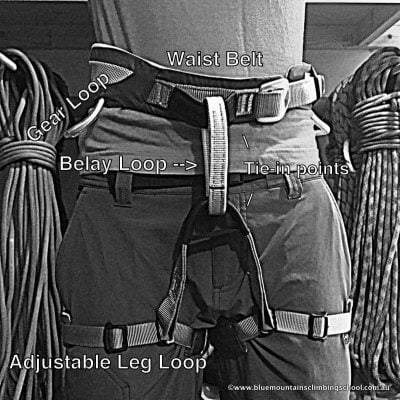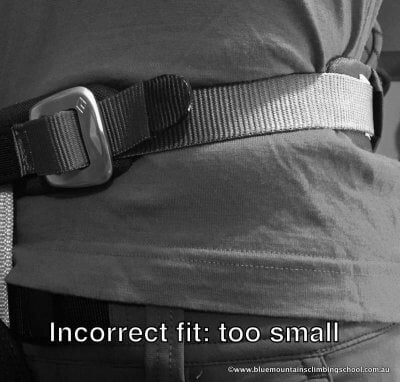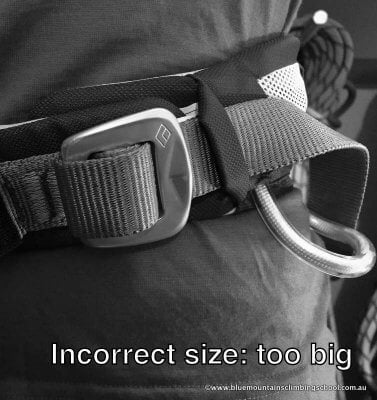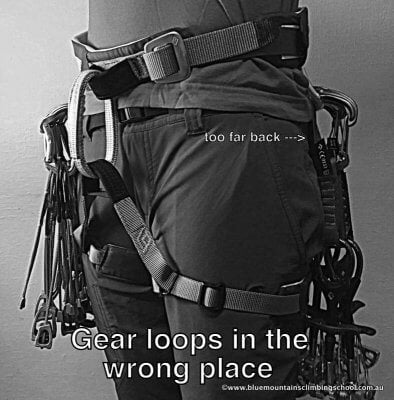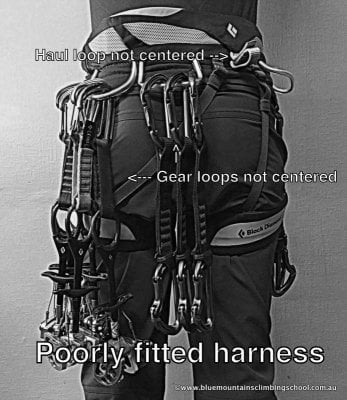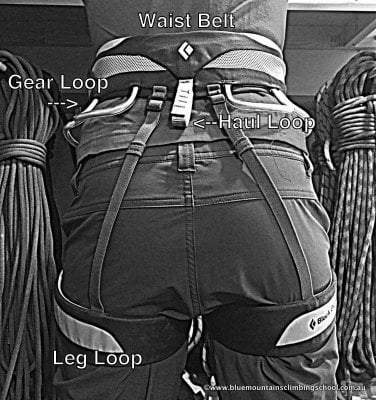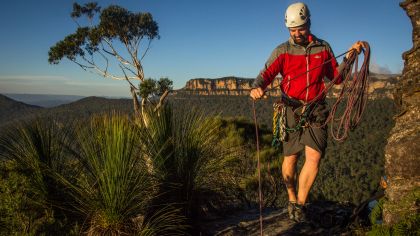
Welcome to Part 2 of our harness guide. If you’d like to start with our first post, you can read it here. If you already know the difference between a tie-in loop and a haul loop and are ready to find out how to get the perfect fit, read on.
1. Dress for success
When you go harness shopping, take the pants, short or tights you climb in most often. It’s worth fitting the leg loops with the clothes you’ll be wearing. Before you put the harness on, loosen off all the straps and make sure you have it facing the right way. This is a front view.
2. Start with the waist belt
When you put the harness on it’s best to adjust your waist belt first.
Unlike hipster jeans and your seatbelt on the plane, climbing harnesses don’t sit low and tight. The waist belt needs to sit quite high, in the soft part between your ribs and iliac crest.
When you tighten the waist belt it should be firm enough that you can’t push it down over your hips. This way, even if you fall and turn upside down you won’t fall out.
As soon as you have the waist belt on you can get a good idea of whether you have the right fit. There are two things to look at:
a) Is there room for extra adjustment? The ideal size will fit snugly around your waist with some room for adjustment, so you can fit extra layers underneath in winter or tighten it up when you’re climbing in shorts and a t-shirt over summer.
When your harness is too small you will notice there is only a little tail left sticking out past the buckle. This means that when winter comes and you find yourself climbing in a warm jacket you won’t be able to loosen the harness enough to make it fit over your winter layers.
In a fit that’s too large, your harness might feel great over a padded jacket, but when summer comes and you’re climbing in a t-shirt, you won’t be able to tighten the harness and it will feel loose and uncomfortable.
When you get the right fit the harness will adjust firmly over whatever you’re wearing, with the option of tightening or loosening it if you need to.
b) Is the harness symmetrical? When the belay loop is centered at the front, the gear loops should be balanced on either side of your waist. If the harness has a haul loop it should be at the back in line with your spine.
If some gear loops are way around the front and others are around the back, the fit isn’t right for you. If your gear loops aren’t balanced, when you load them with climbing gear they will be off balance, which will mean uneven weight distribution that can affect your climbing. Your gear will get in your way and will be hard to reach when you need it.
There’s one simple way to avoid the issues of symmetry altogether: buy a harness with a batwing waist belts. Batwing belts have two buckles at the front instead of one, which allows you to adjust the harness evenly on both sides like on this harness:
3. Fitting the leg loops
Your leg loops will sit somewhere on the upper half of your thigh. Exactly where is up to you, but most climbers find that having them up around where your stubbies shorts might finish is most comfortable. If you have your leg loops sitting really low they can get in the way when you’re walking and pull you off balance if you fall while climbing.
You can use the adjustable elastic straps, which attach the back of the leg loops to the waist belt, to secure the leg loops at the right height for you.
Leg loops can be adjustable (with buckles) or fixed, with a bit of elastic to provide a little give. Leg loops don’t have to be as tight as you’d think, and most climbers like them to be firm but not tight.
In an ideal fit the leg loops will only take 20%-30% of your weight when you’re hanging and the most important thing is that they’re comfortable when you climb.
4. Vertical rise
Vertical rise is an important part of the harness fit that’s often overlooked. Vertical rise is the distance between the waist belt and the leg loops, and it determines what percentage of your weight sits on your waist and legs when you’re hanging.
The best way to check the vertical rise is to hang from a rope when you’re trying harnesses in your local climbing shop. Most good climbing shops will have a place for you to hang with your feet off the floor when trying harnesses. If you feel like the waist belt is digging into your ribs or pulling down at your hips, chances are the vertical rise isn’t quite right.
Women’s harnesses generally have a longer vertical rise than men’s. Some men prefer women’s harnesses and vice versa, it all depends on your body type.
If you get these four points right you’re on your way to a harness that fits just right. In our next post we’ll take a look at the different features you find on climbing harnesses and how to choose the right harness for the style of climbing you want to do.



